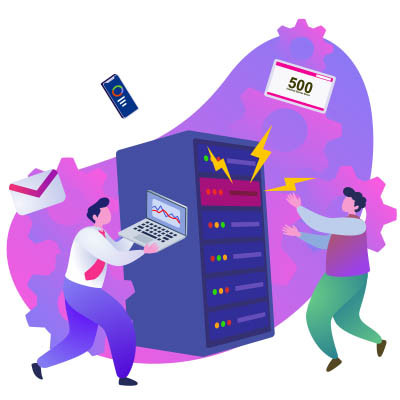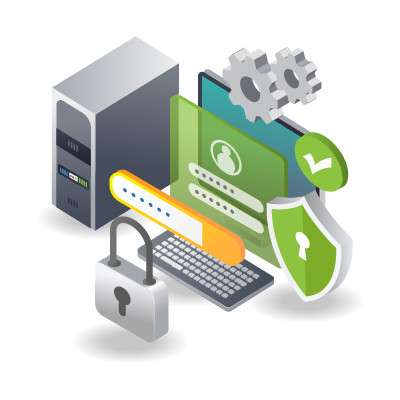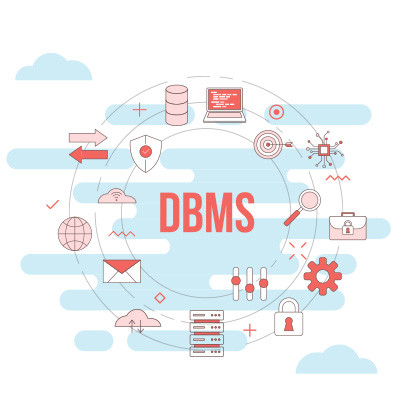You’ll go through various high and low points when you're running your business. That’s just part of the game; the unpredictability comes with running a business. You might lose confidence in your operations and wonder if you’re making the right calls—particularly with business technology. Thankfully, there are ways you can use technology that take a lot of the guesswork out of what the future holds for your business.
Phantom Technology Solutions Blog
Technology is crucial to the success of modern-day business operations, so you must ensure efforts are made to keep your IT in proper working order. A managed service provider, or MSP, can make this a much easier task. Today, we want to discuss some of the common IT challenges businesses encounter and how we can address them.
In today’s world of perpetual security breaches and cyberattacks, it’s no surprise that the greatest response to such threats is to actively prevent them from harming your organization in the first place. One key tool in this effort is an endpoint detection and response (EDR) solution. With endpoint protection on your business’ side, you can leverage a robust and powerful security solution to handle a significant portion of your network security.
How clearly outlined are your IT-related policies and procedures in the workplace? It is difficult at best to manage these expectations alongside your employees, but it’s a necessary task all the same. Today, we want to help your organization walk the fine line between protecting your assets, data, and reputation, and granting your employees permissions to do what they must on your network infrastructure.
Human resources is a critical part of your business, but since it doesn’t generate any actual revenue, there has been a push to cut back on HR spending. In response, many businesses have started using HR automation technology to handle the myriad tasks HR is typically responsible for. Let’s take a look at some of the benefits HR automation can bring to your business.
When you ask a managed service provider or other technology expert when you should be upgrading your technology, you’ll likely get a pretty nebulous answer like, “it depends.” That’s because there isn’t necessarily a hard or steadfast response to this question, and the answer will change depending on various factors that are inconsistent across businesses.
Budgeting for anything can present challenges, especially when businesses heavily rely on information systems. Securing funds for IT initiatives can be particularly daunting in such organizational landscapes. Despite these hurdles, however, the IT sector continues to build steam, with year-over-year business IT spending reaching its highest levels ever. Let’s go into how your IT budget is pivotal in advancing your organizational technology endeavors.
Healthcare is one channel where data continues to flow in and today’s technology is using some new innovations to keep up with provider demands. AI is one of the most transformative technologies in recent times, but understanding how healthcare benefits from it is important to get the most out of it. Today, we take a look at how AI is being used in healthcare.
Passwords serve as the primary defense barrier safeguarding your data against many individuals seeking that data for personal gain. Given the immense pressure put on passwords, understanding the significant threats is mandatory for every person. Today, we aim to furnish you with a handy reference guide to enhance your password management efficacy.
How often do you struggle to talk about potential issues your business faces when you reach out to IT for help? Conversing with technicians can be especially challenging when you don’t necessarily understand the problem yourself, either. Thankfully, we have some tips to help you lead more productive conversations with your IT staff or managed service provider.
If there’s one part of any organization’s operational expenses that concerns many business owners, it’s IT expenses. In fact, some companies have so little control over their IT expenses that they practically hemorrhage money, leading to limited capacity for growth and investment in other parts of the organization that desperately need the help. How can you fix your IT spending and improve your organization as a whole?
It all starts with a network audit and some intelligent future planning. Let’s review some of the most important work you can do to help your business better budget for IT expenses.
Artificial intelligence is no longer confined to use by industry leaders. Small businesses increasingly recognize AI's transformative potential to boost efficiency, enhance customer experiences, and drive innovative strategies. Let’s explore three of the most popular ways small businesses use AI to improve their operations.
A competitive business can adapt to change with new technologies and innovate in their industry. Unfortunately, where innovation and new technologies are concerned, businesses often experience considerable pushback from employees who might not understand how the new solutions support the company’s mission. How do you get these employees on board?
Have you ever tried to introduce new technology to your team, only to have your efforts at improving your business’ efficiency bounce off of your apathetic and frustrated employees who just don’t see the benefits? You’re not alone; it’s difficult to teach old dogs new tricks, as they say. Granted, it’s not impossible, and your team can (and should) be able to get on board with any new implementations, provided you do some initial legwork.
The significance of databases for the average business is extremely important. They are an indispensable tool for seamless operations. Without an efficient database management system (DBMS), your business will not operate optimally. This month, we aim to describe the intricacies of DBMS and its pivotal role in enhancing your business.
Data security is an integral part of not just business operations but everyday life at this point. Most people agree that specific measures to protect data security, like verifying emails and updating antivirus software, are reasonable. However, one aspect that many people fail to consider is oversharing information on social media.
January is host to the Consumer Electronics Show, or CES, which takes place in Las Vegas. It’s an opportunity for companies to show off thousands of neat ideas, concepts, and devices, and if you’re a tech nerd like us, it’s total heaven. It’s also interesting to see what trends can be seen and how they might be brought into a business or consumer landscape.
Blockchain has increasingly become a technology you hear about, but you may not completely understand how it works. It’s often painted as a controversial technology because the corrupt behaviors of people managing cryptocurrency exchanges have put a negative sheen on the technology. The technology, however, has a wide range of applications across various industries due to its decentralized, secure, and transparent nature. Let’s take a look at a couple of the uses for blockchain.
With Voice over Internet Protocol, or VoIP, your business can change the way it communicates and operates for the better. While it might seem like a fancier version of your current telephone infrastructure, it is much more than that; it’s a communications platform that is designed to be flexible, scalable, and dynamic in accordance with your business’ needs.
Let’s explore what your business stands to gain from a quality VoIP solution.
In our rapidly evolving society, very few things are as they once were. One thing that feels a lot similar to the past is the Christmas holiday. Sure, it’s more commercialized than ever, but by-in-large many of our holiday traditions stay the same. People make a point to get together and exchange gifts and eat too much; and they tend to do this every year.




















